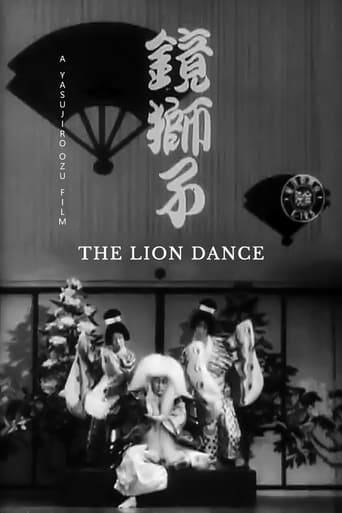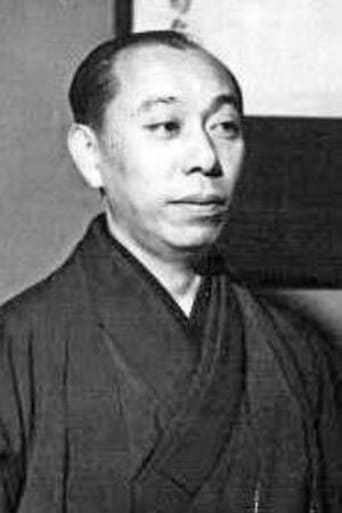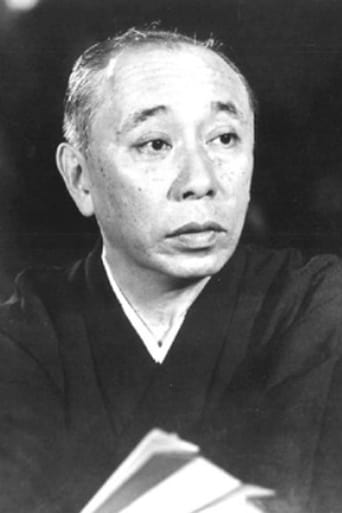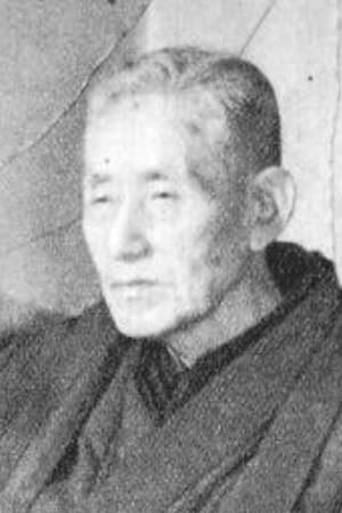

The Lion Dance (1936)
The lion dance in traditional Japanese theatre.
Watch Trailer
Cast


Similar titles
Reviews
People are voting emotionally.
Good movie but grossly overrated
Good films always raise compelling questions, whether the format is fiction or documentary fact.
It is neither dumb nor smart enough to be fun, and spends way too much time with its boring human characters.
"Kagamijishi" or "The Lion's Dance" is a Japanese short film from almost 80 years ago. This was actually made before World War II by famous Japanese director Yasujirô Ozu and despite only being in his early 30s, he was already pretty prolific at that point. Still, I have to say that this 24-minute black-and-white film was not really that impressive to me. I am fairly certain most of his other works are superior. Actually, this one here is really more like watching a play and it's simply not that efficient, even with subtitles. It's a film on film, which is the only component I found somewhat interesting. Really only worth a watch for huge fans of Asian cinema in the first half of the 20th century.
An interesting documentary on the Japanese treasure of Kabuki, directed by another Japanese treasure, Yasujiro Ozu. Kagamijishi, or The Lions Dance, is a depiction of a young girl who becomes possessed by, and eventually transforms into, a demonic lion-like beast. It's a shame that this is in black and white so we can't fully experience and appreciate the wild and vivid colours of the kabuki dance, but it's glorious nonetheless. I'm also really happy that there was an informative preface detailing how complex the moves are, how closely they resemble that of a naive court girl, and how mentally concentrated the kabuki actors are. Without that, the documentary would have fallen flat, because throughout the 23 minutes that this occupied my screen, I became transfixed upon every solitary movement that the actors did. The fluidity and frailty of these delicate movements is astounding, and even when the demonizing lion occupied the stage, it's actions were smooth and majestic, just like that of a lion.
"Kagamijishi" is a 24-minute film intended to introduce audiences to Kabuki theater and also to showcase the skill of Kikugoro IV who was a legendary Kabuki artist. When I am almost never bothered by black and white films (I can't imagine for instance Kurosawa's "Rashomon" or Allen's "Manhattan" in color), I was frustrated by the black and white photography of this documentary. It is really a pity that we can't fully enjoy the bright colors and the richness of the Kabuki costumes. Nevertheless, Kikugoro (who was then 51) is amazing when transforming himself from delicate maiden to ferocious lion. His dance with a pair of fans is simply mesmerizing.Of course this is not enough for true Kabuki connoisseurs. As for Ozu's admirers, they will enjoy this short film as the only documentary shot by the master, but I believe it is to be watched when you have seen most of Ozu's great works.
This short documentary by Ozu was intended to present the artistry ofkabuki dancer Kikugoro Onoe IV to both Japanese and foreign audiences. A voice-over narration introduces Kikugoro as well as the dance he performs in the film's second half, in which a young girl is transformed into a resplendent lion (the imagery of which apparently inspired Jean Cocteau as he conceived his own BEAUTY AND THE BEAST). Watching Kikugoro imitate the gestures of a demure maiden you see how he deserved his fame. Ozu shoots the performance in three simple set-ups: a roving frontal shot of the performers on stage, an angled shot from the side of the stage, and an angled longshot that acknowledges the presence of the audience in a way that is unmistakably Ozu.





